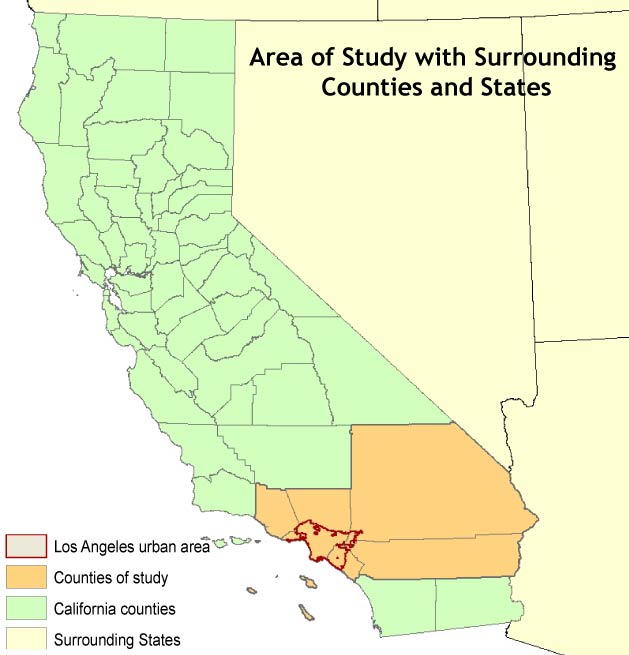The United States is a nation of immigrants and ever-rising migration from countries all over the world. Of the many entry points and hubs for this influx of new and diverse populations, Los Angeles, California has been as widely associated with immigration as its east coast counterpart, New York City. Once even a part of Mexico in the 1800’s and now still a destination for thousands of Mexican and Hispanic migrants every year, Los Angeles is known for its multiethnic and especially Hispanic population. My goal in this project was to map the growth and trends of these Hispanic communities from 1960 to 2000, using the latest census data. By exploring the patterns and movement of Hispanic populations, as well as other attribute data such as levels of educational attainment, one can gain a better understanding of these communities and their inhabitants.

Within this study, I utilized a variety of mapping techniques, including animations, bivariate maps, cluster analysis, and choropleth maps, in order to best display the different types of information that I collected. The extent of my study area covers the five Los Angeles area counties (Ventura County, Los Angeles County, San Bernardino County, Riverside County, and Orange County), while focusing primarily on the Los Angeles urban area as defined by the US Census. I gathered data by census tract from the National Historical Geographic Information System (NHGIS) for all time periods and interpolated data from year to year using areal and density weighting. In this way I was able to account for ever-changing tract boundaries and produce accurate data tables for each year.

In the following maps, I will look at the growth of Hispanic populations and the trends that are included in this growth. Other variables relating to educational attainment and proficiency in English are also displayed in order to show correlations between these attributes and the Hispanic communities in Los Angeles.